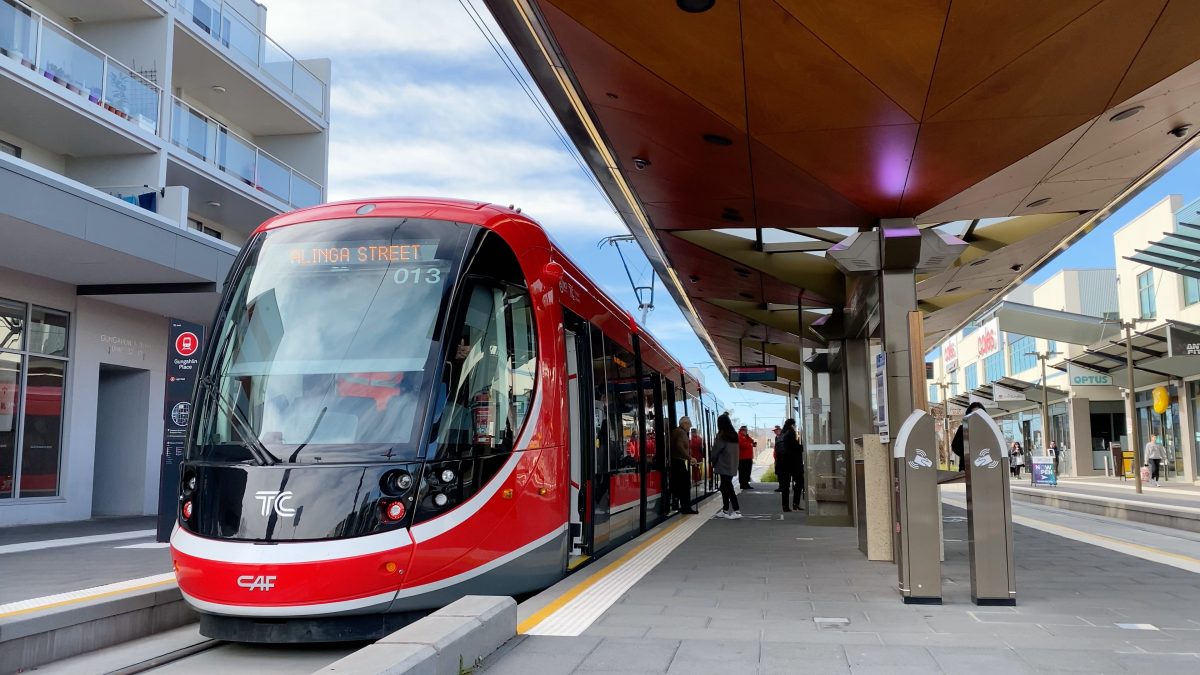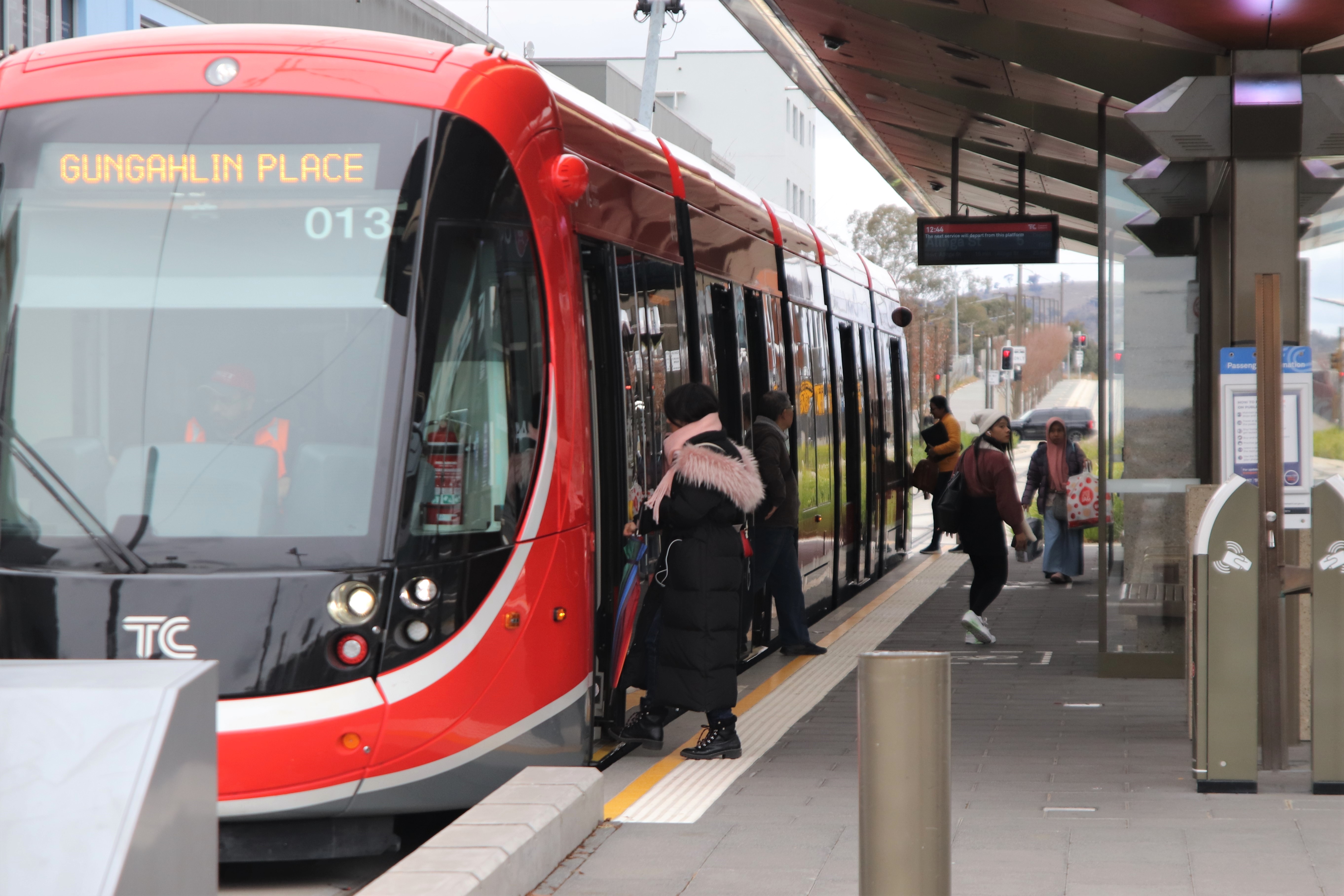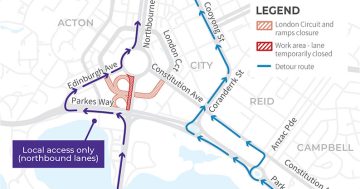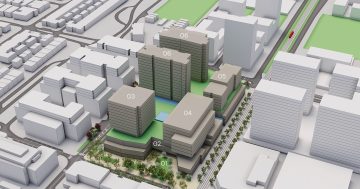
Will living next to light rail mean that a car and parking space won’t be necessary for some? Photo: Region.
Motoring enthusiast Mick Gentleman says he doesn’t have it in for cars, but there is no doubt that under the new planning system, it will be easier for developers to reduce their parking commitments for apartment blocks on transport corridors.
The Planning Minister set the hares running this week with his comments about parking in new developments, acknowledging that developers have already begun reducing, or at least trying to reduce, the number of parking spaces they have to provide based on the site’s proximity to public transport.
Anybody who has looked at development applications for apartment blocks on the Northbourne Corridor will know that developers will argue that access to light rail should mean less demand for a parking space.
Mr Gentleman says that the ACT is preparing for a time when the public transport system is so good that some people will not need a car, and the new, more flexible planning system should be able to accommodate not just fewer parking spaces but perhaps none at all.
This will mean reduced costs for developers who may not have to build expensive basement car parks, resulting in more affordable apartments and more choice for home buyers.
It will certainly mean more price points for developers and real estate agents but not necessarily good outcomes overall.
The property industry loves to be able to slice and dice to create new products.
What may have been standard in homes becomes a premium feature, and that will happen to the garage.
Many will no doubt be happy to opt for the less expensive product just to get a foot on the property ladder but don’t expect all of them to not have a car.
Those who keep their cars will have to park them somewhere, and that will be visitor spaces and in nearby streets, unless, of course, the government bans parking around developments.
This will lead to car-clogged streets and degraded amenity that will be a nightmare to negotiate, basically transferring what should be a private responsibility to a public liability.
And if they are electric vehicles, where will they be charged?
Even when there are light rail branches all over Canberra, to suggest residents, especially families, will give up their cars in a decentralised city like Canberra is beyond optimistic.
It presupposes that people will be able to, or have to limit themselves to their local ‘village’ and local school, carting shopping on foot or by bike, and jumping on the tram or bus which will pass by every few minutes to get to work.
Canberra needs a strong, effective public transport network to move people en masse and reduce car use, especially in peak times, but in a city stretching from Gungahlin to Tuggeranong, anybody who has done the weekend sports run will know how vital your own vehicle is.
Or does the government expect these garage-free apartment dwellers to be all single, childless, bike-riding, tram hoppers?
In Gungahlin, parts of which are on a light rail corridor, Mr Gentleman’s remarks rang alarm bells for community representatives already grappling with a lack of infrastructure, apartment developments impacting amenity and suburbs where public transport remains minimal.
The fewer car parks model could also be extended to hotels whose guests may not arrive by car, although many will hire a vehicle once they are in Canberra if they want to see more of the capital and region than just the city.
Allowing developments to reduce their parking requirements or ditch them altogether may seem reasonable when strong public transport options are available to reduce congestion and provide more choice in the housing market.
But it means reducing choice in other areas and is bound to be mugged by geography and human nature.
The government should be very careful about heading down a path that will create problems all too easy to see in other cities and which it will have to manage.
Original Article published by Ian Bushnell on Riotact.










